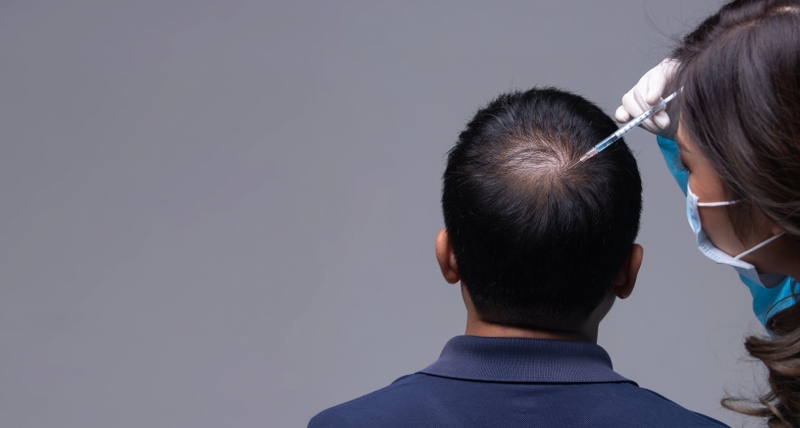 The first step in addressing hair loss is to determine its type and severity through a dermatological examination. After the examination, factors that might cause hair loss are investigated and identified. Subsequently, a personalized, suitable treatment plan is created for the patient. Treatments for hair loss can include mixtures, supportive vitamins and therapeutic drugs, hair mesotherapy, PRP therapy, and hair transplantation. Hair mesotherapy and the PRP method are often-utilized effective treatments for hair loss. Stress, fatigue, environmental factors, aging, chronic diseases, past infections, and genetic factors can all contribute to hair loss.
The first step in addressing hair loss is to determine its type and severity through a dermatological examination. After the examination, factors that might cause hair loss are investigated and identified. Subsequently, a personalized, suitable treatment plan is created for the patient. Treatments for hair loss can include mixtures, supportive vitamins and therapeutic drugs, hair mesotherapy, PRP therapy, and hair transplantation. Hair mesotherapy and the PRP method are often-utilized effective treatments for hair loss. Stress, fatigue, environmental factors, aging, chronic diseases, past infections, and genetic factors can all contribute to hair loss.
Particularly, if no measures are taken against "male pattern baldness," which causes significant hair loss, baldness can develop. In some individuals, this can manifest at a young age. Hair mesotherapy helps prevent hair loss and nourishes the hair follicles with potent mixtures, strengthening them. Hair mesotherapy is a procedure done to both men and women to prevent hair loss and restore the hair's natural vitality. Unpreventable hair loss often manifests as what we call "male pattern baldness" (androgenic alopecia) or can present clinically as telogen effluvium, leading to significant hair loss.
In cases where supplementary treatments are inadequate and hair loss is increasing, hair mesotherapy can be administered. In the long run, hair mesotherapy helps strengthen existing hair, making it denser and promoting growth. For issues like hair loss and lifelessness, it's vital to nourish the body and hair follicles with ample vitamins and minerals. External supplementary treatments and shampoos might not be sufficient to halt significant hair loss. In such situations, applying directly under the skin to the hair follicles through mesotherapy ensures more effective results. Hair mesotherapy can be done on anyone over the age of 18 who has hair loss or desires more vitality in their hair. The PRP method is an effective and safe treatment used in many subtypes of hair loss today.
Both in androgenic alopecia, which we call "male pattern hair loss," and in telogen effluvium, PRP treatment can be applied. PRP stands for platelet-rich plasma. When damage occurs in our skin, clotting cells are the first to reach the injured area and treat it. The core idea behind PRP application is to enrich clotting cells and then reapply them to the individual. Blood taken from the patient is separated, enriched, and then reintroduced with the aim of rectifying skin imperfections. The PRP method is one of the effective solutions against hair loss. PRP is based on the principle of producing cells that will renew the skin with cells from a person's own blood. These new cells are then injected back into the body using fine needles.